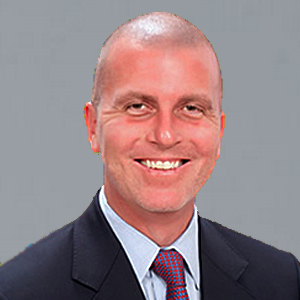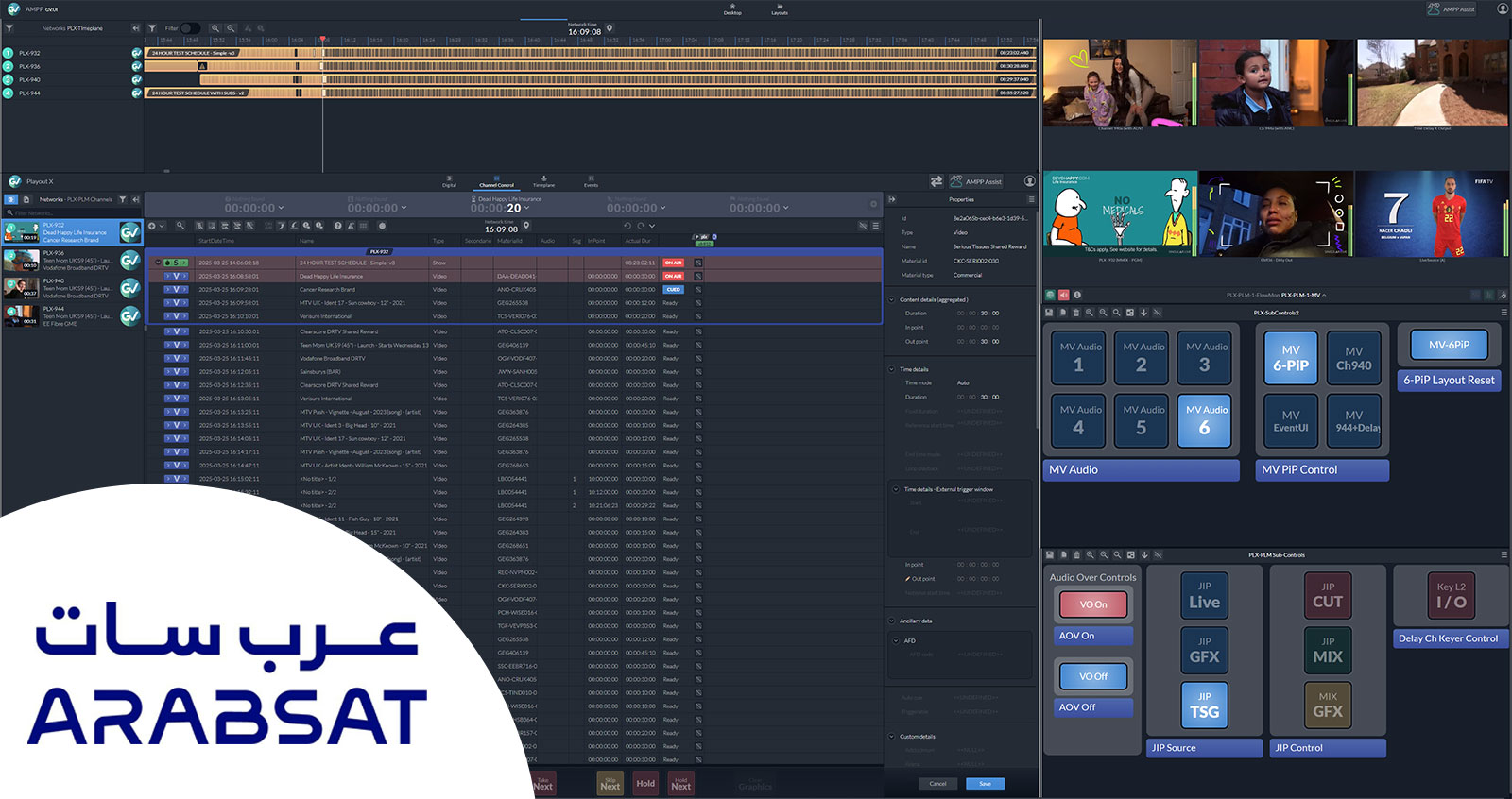Newly Formed Public Media Group Plans Nationwide ATSC 3.0 SFN Rollout
WASHINGTON—For the past several years, the ATSC’s annual meeting has provided a forum for broadcasters and broadcast-aligned entities alike to make offers they hope will advance deployment of Next Gen TV.

A few years ago, it was Mark Aitken of the Sinclair Broadcast Group and ONE Media, offering 1 million ATSC 3.0 receiver chips at no charge to cell phone manufacturers and other wireless device makers that promised to build them into their commercial products.
At this year’s gathering, which wrapped up Thursday, May 30, Public Media Group (PMG) announced its plan to transform the television industry with ATSC 3.0. Working with public and commercial TV broadcasters alike, PMG plans to roll out a nationwide network of 3.0 single frequency networks (SFNs) for reliable wireless delivery of data and mobile TV.
PMG, a partnership with the Public Media Venture Group’s public TV stations and Osborn Engineering, will design, engineer and build SFN sites for its client broadcasters, which in turn will lease that infrastructure from PMG on a long-term basis.
Besides building the SFN network, PMG will build datacenters and create software platforms in support of the deployment. There are even plans for renewable energy to power the SFN network. At its June launch, PMG will begin with its 31 public broadcasting entities, which represent nearly 120 stations that reach about 250 million Americans.
PMG’s management includes Erik Langner, former president of Public Media Company; Eric Dausman, former CTO of Osborn Infrastructure and COO of Sutro Tower, as SVP, RF Technology; and Joe Chinnici, former president and COO of BioStar Infrastructure, as CEO.

In this interview, Chinnici discusses PMG’s plans, its offering to broadcasters, its willingness to collaborate with a diverse set of clients and the opportunity SFNs transmitting data and television with 3.0 offers broadcasters.
Get the TV Tech Newsletter
The professional video industry's #1 source for news, trends and product and tech information. Sign up below.
(An edited transcript.)
TVTechnology:What is your offer and how will it impact the decisions of broadcasters as they weigh their alternatives for 3.0 rollout?
Joe Chinnici: There are four questions I get asked, really almost every single time, whether it’s a public sector client or a commercial client in regards to why us, why 3.0 as well as SFNs—let alone next-gen broadcast and datacenters.
Those four questions are: No. 1, do we have the engineering capabilities to develop a nationwide, market-neutral single frequency network platform?
The answer is yes. We’ve got sufficient RF engineering and technology capabilities to lead the industry, whether it is public or private [broadcasting]. One of our founding members is Osborn Engineering. They’ve been a market leader in RF engineering for several years.
No. 2, do we have the financial resources to pay for this? It is a pretty significant pro forma as you start to layer on multiple layers of infrastructure assets, and we have a very significant global equity infrastructure fund that is supporting us to the tune of several billion dollars.
We have two global financial institutions for project level as well as lease financing capability. So, we're well-capitalized to support our plan, so we can take that contingency off the table for our clients.
No. 3, arguably one of the more prominent questions is can we assist our clients with new revenue opportunities? Clearly that's top of mind for everybody as they consider entering into operating and lease expenses with us in return for us building out that infrastructure.
We're happy to say that we've made several introductions between non-traditional users of spectrum that would like to potentially sublease and utilize some of that data [capacity] with our broadcast clients. We don't get in the middle of that; it's not our job to do that. But it is our job to support our clients when they're considering evaluating and proceeding with new revenue opportunities.
And then fourth, are we neutral? I mentioned in the engineering comment we approach each market from an agnostic basis, and we design to the optimal deployment for all of our clients, whether they're public or private. We have no bias.
We don't have existing infrastructure assets that we try and position in that solution to the potential detriment of our clients. But more importantly, are we Switzerland between the clients?
TVT:It looks like you're proposing a competitive alternative to what Spectrum Co. has been working on. Is that correct?
JC: I think that's a fair statement. However, I'd reposition it this way. We're approaching the market on a fully collaborative basis with a neutral party to bring different clients within each segment together.
I applaud, certainly, other participants in the industry trying to advance 3.0 adoption, but they're doing it through a more limited or narrow approach.
Again, we approach it completely the opposite way. We engage all the market participants, whether it be a city DMA or a state-wide DMA and invite them into our process. That’s No. 1.
No. 2 is we have a full infrastructure development plan. Phase one is around ATSC 3.0 upgrades, as well as the single frequency network development. Phase two, next generation broadcast datacenter development. And then phase three, once we understand the critical load needs of phase one and phase two, we'll develop and deploy renewable energy. So we have a full lifecycle value proposal to our clients that has been well received.
Third, we're taking the financing off the table. Again subject to market lease, of course, and investment committee and underwriting, we remove that contingency. And then we also engage in new business opportunities.
TVT:Broadcasters are going to need to collaborate on channel sharing to get from ATSC 1.0 to 3.0. Are you going to be involved in that part of the process?
JC: Absolutely. We’ve started at ground zero, or even minus zero. So, by the end of this month we will have at least mapped out support for all of our initial 31 broadcast partner markets.
And those range from the largest—New York, Chicago, San Francisco—to the smallest—one is 80 miles outside Nashville—to statewide networks. It's not quite roughly a third, a third and a third, but you know, directionally, that's fair enough for this conversation. So we'll have that fully mapped out, and that represents 118 different stations.
That’s on the public side. We are doing that because that community represents a significant, albeit a minority, shareholder in our company. So we have an anchor client from a capital market’s perspective.
At the same time, we’ve engaged with seven different commercial clients, and they range from the networks to the group station owners in the markets where they overlap with the community I just mentioned, as well as some markets that are outside of that—although those are few and far between.
So, yes, we have been conducting and rolling out on a progressive basis. So by the end of June, we will have our initial core clients mapped out. We even have had channel swapping conversations going on.
TVT:What does having public broadcasters as minority shareholders bring to PMG?
JC: To be candid, I wish I could tell you that I came up with all of this, but I did not. We are extremely fortunate to have those 31 PBS stations as members in the minority ownership of our company.
There is a tremendous amount of goodwill there. When the hurricanes hit Houston within the past couple of years, virtually all of the commercial stations where knocked off the air. But the one that remained was the PBS station.
Overnight, they offered to and did host all of those other commercial stations, including one they hosted for about 18 months. This was done through generosity and goodwill in the industry.
So, there is this huge reservoir of political capital, if that’s what you want to call it, that we are able to leverage. So we’ve had a tremendous level of support as well from the commercial side.
TVT:So, the plan is to leverage the advantages SFNs bring, such as a higher, more consistent signal level throughout a market to deliver mobile or wireless data, and to roll this out nationwide, right?
JC: That is absolutely correct. Our ultimate plan is a nationwide rollout, and that will take us five, 10 or 15 years. What we have now is a starting point with that anchor set of clients on the public side—at least 118 different stations that reach 240 million to 250 million eyeballs already. So we already have a very large client segment to support. Creating a nationwide platform is going to take time, but ultimately that is our goal.
TVT:What is the deal you are offering broadcasters? You are going to pay for the capital expense of the SFN network deployments in exchange for what? Time on the network? A certain number of bits—a percentage of data throughput? Or something else?
JC: At the end of the day, it is a very pedestrian story. We receive a lease payment from our clients for access to this infrastructure we are building for phase one, phase two and phase three. It’s pretty simple.
With respect to getting involved with the spectrum or the data capacity and potential new revenue opportunities, we are certainly active and exploring new revenue opportunities for our clients.
But we do not participate in that. We do not manage their spectrum. We can certainly advise, introduce and even assist in executing a bilateral agreement between non-traditional users of that spectrum and the holders of that. But that’s not our business model.
However, related to that, we absolutely are involved in discussions around new revenue opportunities.
TVT:In announcing your plans this week, you identified the automotive and agricultural industries as possible clients for broadcasters with new PMG-built SFNs offering 3.0 service. Do you have real clients for broadcasters that you can bring to the table who want to use these SFNs to deliver data?
JC: The short answer is yes. We have a couple of other segments to fall in line with that. In no particular order, we have significant reverse inquiry around the educational aspects of this. It could be distance learning; it could be workforce retraining—in markets or even areas adjacent to metropolitan areas that can benefit from the connectivity and some entity providing that information flow.
We are seeing a significant amount of interest in the emergency management space from statewide networks to more localized. The wildfires in California, for example. The one thing everybody heard was that Verizon and AT&T powered down certain communications portals, and when you are in the emergency management business you can’t do that.
So we are in extremely active conversations involving new revenue opportunities in those spaces. And then technology clients, absolutely. And on the agricultural side the same.
TVT:Related to possible commercial broadcast clients, you mentioned PMG is engaged with seven networks and broadcast groups. Do those include member of the Pearl TV coalition?
JC: We are currently getting through our legal documentation, so we won’t be able to release the names until the end of June.
We would love to collaborate with Pearl. We don’t want to give the impression that we are competitive. We would be more than happy to collaborate with Anne Schelle and her team at Pearl as well as other industry participants.
TVT:Is there any reason why this has to be a competitive offering versus Spectrum Co.? In other words, why wouldn’t collaboration be possible?
JC: There is no reason. You are absolutely correct. Again we feel we bring a different approach—a broader approach and a more inclusive approach to this. The firm that you just mentioned, there are some competitive issues that are challenging. However we are able to bridge that divide.
We have been specifically asked by their executive management team to consider collaborating. I’ve said unequivocally, I am open to that.
For a comprehensive source of TV Technology’s ATSC 3.0 coverage, see ourATSC3 silo.
Phil Kurz is a contributing editor to TV Tech. He has written about TV and video technology for more than 30 years and served as editor of three leading industry magazines. He earned a Bachelor of Journalism and a Master’s Degree in Journalism from the University of Missouri-Columbia School of Journalism.

